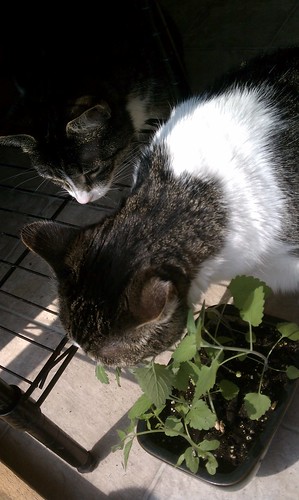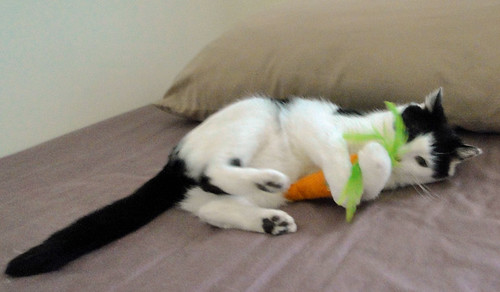Many cat owners have wondered what is so special about catnip. Catnip (also called catmint) is not nothing else but one plant, but the whole genus, Nepeta, consisting of 250 species of plants. These plants look like small green-gray mint leaves with buds of white or purple flowers. Catnip has been used for centuries as a herbal remedy and was the most coarse tea consumed in Europe before trading was established from the orient.
 [b]Catnip[/b]
[b]Catnip[/b]
How it works: anyone who has seen a cat sass to catnip has probably wondered what the cause is. It is believed that the chemical emitted by the plant (Nepetalactone) mimics feline pheromone. Valerian and honeysuckle also contain more trace amounts of this involved chemical. While dried catnip has some effect, fresh catnip is particularly enticing.

A great deal of cats sass to this by rolling around, pawing, meowing, licking, biting, scratching and even becoming aggressive or euphoric. Interestingly this same chemical works to repel cockroaches and termites, so getting kitty a snack is useful for the whole house.
In the Genes?: It is suspected that catnip response is genetic as there are some cat breeds that do not sass to catnip, most notably Australian and Southeast Asian breeds. Cats whose breeds are from areas where catnip does not grow are more likely to be immune to responding along with kittens who are not yet sexually mature.
Availability: Catnip is available distilled into a spray, as a pure oil, fresh, dried leaves or dried or fresh buds( the tip of the plant where the flowers are, this contains the top concentration). Catnip can be sewn into the linings of cat beds and toys or sprayed directly on.
A few handling notes: Catnip potency can be affected if it is kept in sunlight. Otherwise catnip has an very long shelf life. Crush dried leaves to issue the chemical.
How Catnip Affects Cats
No comments:
Post a Comment